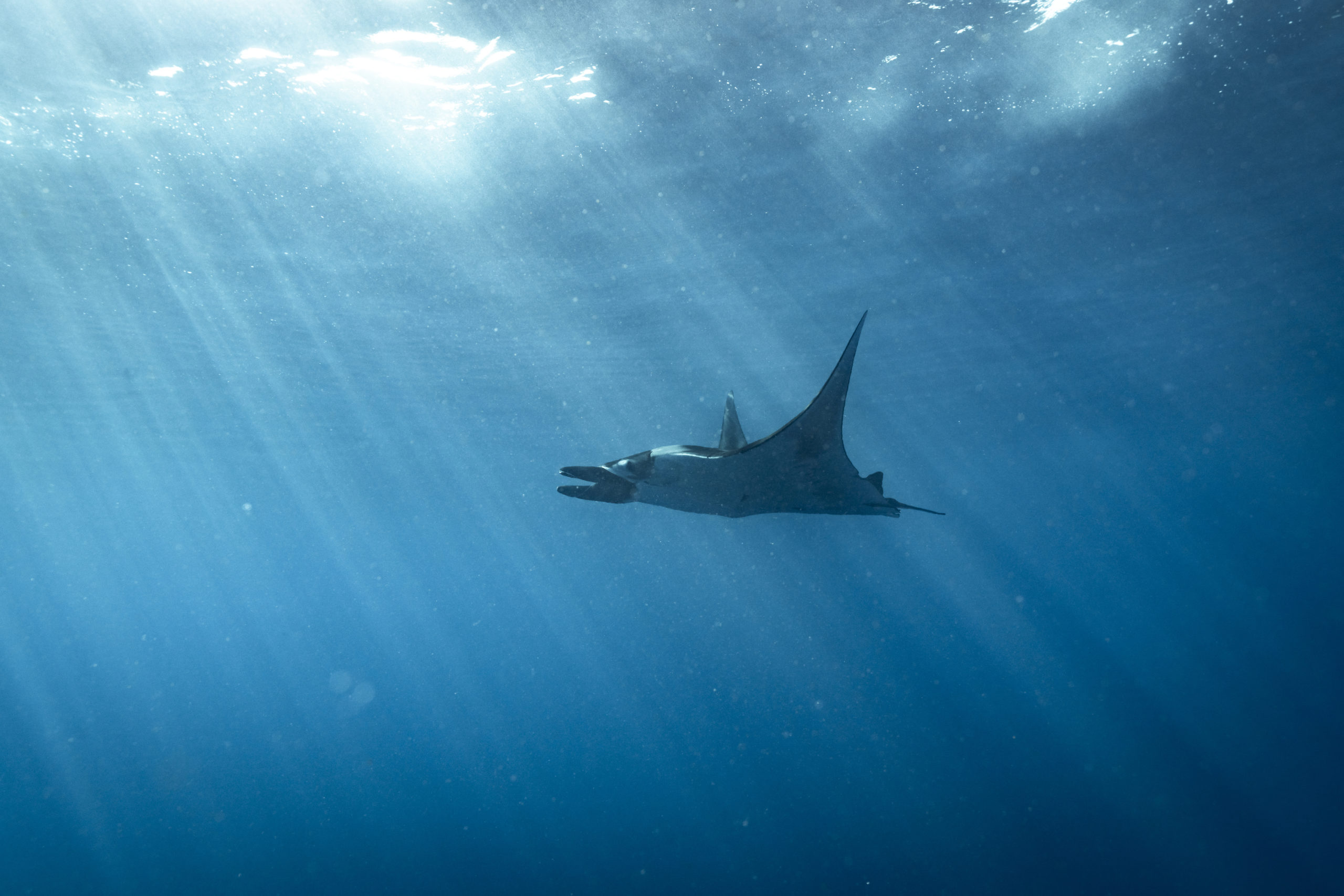To Protect Galápagos Islands, Ecuador Turns to Innovative Financing.

Debt conversion will fund perpetual conservation of renowned marine habitat.
Giant tortoises, marine iguanas, and birds unique to the area greeted Charles Darwin when he arrived on the Galápagos Islands in 1835. If he could have peeked below the waves, Darwin would have found an abundance and diversity of life to rival his famed finches. The confluence of three major ocean currents brings an upwelling of cold, nutrient-rich water to the tropical Galápagos Islands, which harbor some 3,000 species including whales, dolphins, sharks, sea lions, rays, sea turtles, tuna, and tropical fish, as well as some of the world’s highest levels of endemism—that is, species found nowhere else on Earth.
Although these waters have long been under some level of protection, they have remained vulnerable to a range of threats, most notably illegal fishing and climate change. So, in 2023, it was welcome news that Ecuador completed what is known as a debt conversion, which will provide a sustainable source of conservation funding that will be used to improve safeguards in the Galápagos Islands. Leveraging existing debt to create sustainable conservation resources
Debt conversions for nature are arrangements intended to help governments fund conservation. Typically, these transactions involve reducing debt alongside financial commitments to conservation. In May 2023, Ecuador, with technical and financial support from the Pew Bertarelli Ocean Legacy Project and other partners, converted $1.6 billion in existing commercial debt into an $656 million loan financed through a bond issued by Credit Suisse. The deal provides significant and dedicated financial resources for conservation in perpetuity through a long-term funding commitment by Ecuador, which includes building an endowment that will pay for conservation activities in the future.
In addition to repaying the new loan for about 18 years, Ecuador will also provide about $17 million annually for conservation—about $12 million for activities and about $5.4 million to seed a permanent endowment. In 2040, when those payments from Ecuador conclude, the endowment assets, estimated to total about $227 million from the accumulated payments and stable investments, should be sufficient to continue financing conservation activities at the same level (slightly more than $12 million annually) in perpetuity.
The new arrangement will also save the country more than $1 billion in total borrowing costs—resulting from forgiven debt, known as write-offs, and reduced interest—and generate conservation resources totaling more than $450 million (including payments and assets) for the Galápagos Islands over the next 20 years, and far more over time. The transaction is the world’s largest debt refinancing for ocean conservation to date.
A U.S. Congressional Research Service report found that since 1987, at least 16 countries—including Bolivia, Brazil, Costa Rica, Ecuador, and Peru—have completed nearly 50 debt conversions for nature. In total, these three-party debt conversions involved approximately $200 million in reduced, restructured, or converted debt and generated about $167 million for conservation activities. Ecuador’s debt conversion total and expected benefits are greater than all those previous transactions combined.
For more information : https://www.pewtrusts.org/en/research-and-analysis/fact-sheets/2023/05/to-protect-galapagos-islands-ecuador-turns-to-innovative-financing
[socialpug_share]